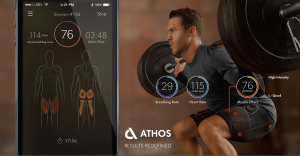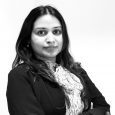The fashion industry is undergoing a significant transformation, driven by advancements in innovative collaborations. As consumers become more tech-savvy, the demand for smart clothing is skyrocketing, prompting brands to integrate advanced technologies into their apparel. This shift not only enhances the consumer experience but also revolutionizes the manufacturing processes, especially in key hubs like India, Bangladesh, and Vietnam.
Smart clothing, often referred to as e-textiles or smart fabrics, incorporates advanced technologies such as sensors, conductive threads, and nanotechnology to provide added functionalities beyond traditional clothing. These innovations range from health monitoring and fitness tracking to adaptive temperature control and interactive features.
Levi’s and Google: Their Project Jacquard produced a smart jacket that can control a smartphone through simple gestures. This innovation allows users to answer calls, play music, and get directions without taking out their phone, blending fashion with functionality. (cover image)
Ralph Lauren and OMsignal: This collaboration resulted in the PoloTech shirt, which features biometric sensors knitted into the fabric to monitor the wearer’s heart rate, breathing depth, and activity intensity. The data is transmitted to a companion app, providing real-time feedback and personalized workout recommendations.

Hexoskin Smart Shirt and Athos apparel: lead the smart clothing market by offering advanced wearables that enhance personal health and fitness monitoring. Hexoskin integrates textile sensors into comfortable, high-performance garments to monitor cardiac, respiratory, and activity metrics in real-time through a dedicated app, providing detailed health data for personal and research use (Wareable, 2023).

Similarly, Athos uses Electromyography (EMG) technology to measure muscle exertion, heart rate, and breathing rate in athletic wear, with data transmitted to a mobile app for real-time feedback, optimizing workouts and preventing injuries. Both brands push the boundaries of performance monitoring through innovative, wearable technology (Wareable, 2023).

Benefits of Smart Technology in Fashion
Smart clothing offers a multitude of benefits. By incorporating advanced technologies, these garments enhance consumer experiences through features like health monitoring and personalized adjustments, streamlining daily life. Moreover, smart clothing promotes sustainability by enabling the creation of durable, adaptable apparel that reduces waste. Tailored experiences, where garments adapt to individual preferences, foster deeper consumer connections. Ultimately, embracing smart technology allows brands to differentiate themselves, attract tech-savvy customers, and lead industry innovation.
Impact of Smart Clothing on the South Asian market
The increasing popularity of smart clothing among Gen Z and Western markets is poised to significantly impact manufacturing hubs in India, Bangladesh, and Vietnam. These countries, renowned for their robust apparel manufacturing sectors, must adapt to the rising demand for smart clothing by integrating advanced technologies into their production processes. To meet this demand, manufacturers will need to invest in new technologies and upgrade their existing infrastructure. This includes incorporating IoT-enabled machinery, adopting AI-driven quality control systems, and implementing nanotechnology in fabric production. Such advancements, while requiring substantial capital investment and workforce training, promise to enhance production efficiency and product quality.
The transition to smart clothing manufacturing will also necessitate a skilled workforce proficient in handling advanced technologies. Training programs focused on digital skills, AI, and nanotechnology will be essential in equipping workers with the necessary expertise. Collaboration between governments and industry stakeholders will be crucial in providing educational resources and training initiatives to support this transformation. The shift towards smart clothing production can spur economic growth in these manufacturing hubs by attracting more business, leading to job creation and higher profitability through the production of high-value smart clothing. As technology continues to evolve, manufacturers that embrace smart technologies will position themselves at the forefront of the fashion industry, catering to the evolving needs of consumers and contributing to more sustainable and efficient production processes.
Moreover, the adoption of smart manufacturing practices can lead to more sustainable and efficient production processes, aligning with global efforts to promote sustainability in fashion. By leveraging technological advancements, manufacturers can reduce waste, optimize resource utilization, and create products that are not only innovative but also environmentally friendly.



Leave a Comment